Like photos, paintings, televisions, or iPads, home-sized aquariums
usually follow an approximately rectangular format where the horizontal
dimension is significantly longer than the vertical dimension, but not
more than twice as long.
For my latest tank, I chose an unusually long and shallow tank, the UNS
90L — which measures 36" long by 12" high:
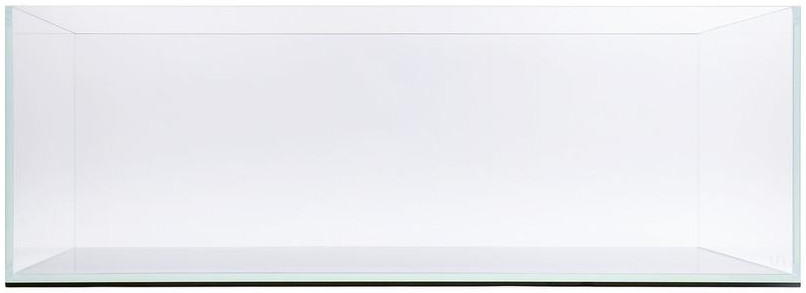
A shallow (depth and height) tank like this, while interesting in some
ways, also limits you in other ways. In particular, "layering" becomes
hard to do.
Layering is a technique used for building points of visual interest and
perceived depth in the tank. In the very simplest sense, it's about
creating a sloped surface with many layers of different plants,
substrates, and hardscape, such that all elements are visible at once:
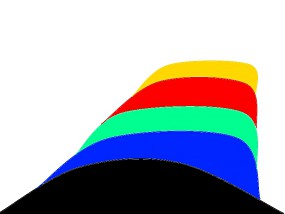
Layers build in height from the front to the back, such that every
layer can be seen. From "Creating
a three-dimensional layout with a pronounced sense of depth".

The best (only) example I could find on the internet of layering.
More elaborate aquariums also use shadow, boundaries of color or
texture, and some forced perspective to create visually distinct
layers:
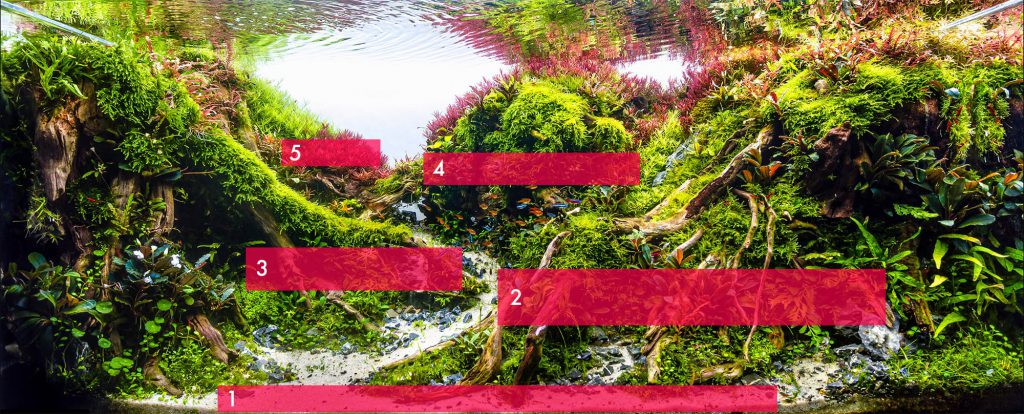
A 5-ish layer aquarium. From "Aquascaping
Styles: Nature Aquarium, Iwagumi, Dutch Aquarium".
But the less Y and Z dimension you have, the harder it is to build
layers.
This being a "panoramic" tank, I had a lot of horizontal space
available to create points of contrast. So I started with the idea of
making a "two island" style tank. "Island style" is a common technique
where you have one busy part of the tank, and surround it with serenely
empty areas:
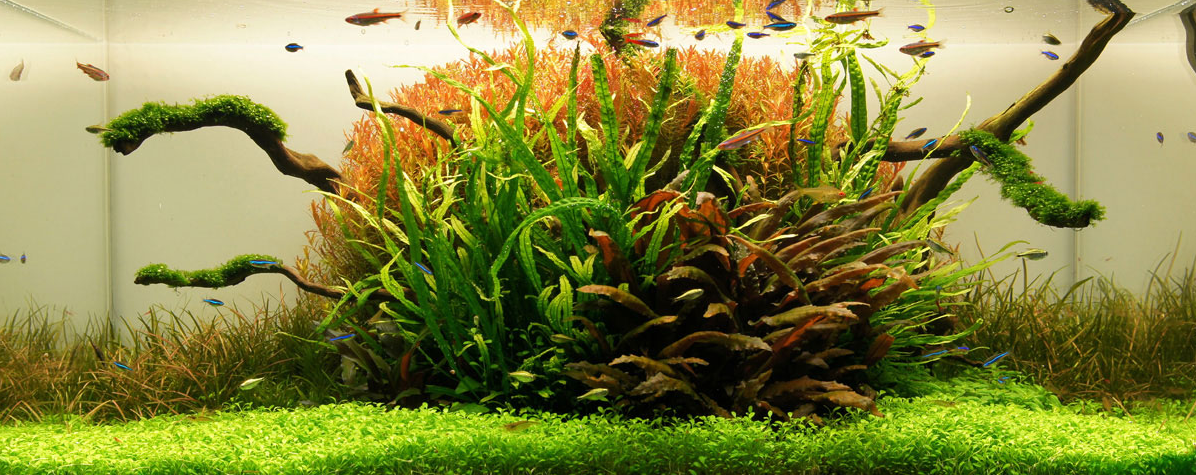
Given that I had lots of horizontal space, I figured that i could fit
two islands, with enough blank space around it to still have the same
feel as the typical "island style" tank.
I find the first steps in any creative endeavour, when you're deciding
and committing to a sketch or idea, to be the hardest and most
time-consuming. For aquariums, that is defining the hardscape. I spent
a lot of time picking the right size rocks, making sure the most
interesting faces were pointing to the viewer, picking branches that
weren't too big or too small, etc. I always find the result of this to
be underwhelming, which is why I think it's so hard for me to commit to
something. Anyway, this is what I ended up with:
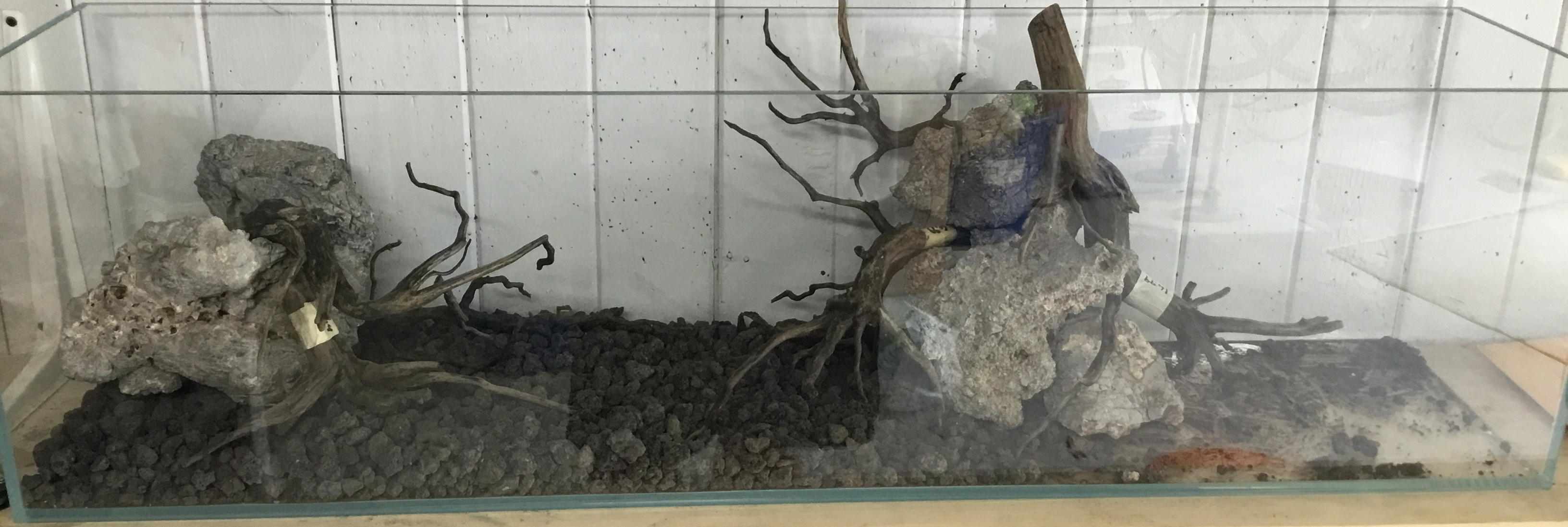
Initially, I used crushed lava rock as a kind of base layer. I did this
reflexively, because usually for my aquariums I'll use a low value
material (like crushed lava rock) to create height, instead of
expensive aquasoil. I also think it's more structurally sound. However,
I ended up removing almost all of it, because I ended up not building
upwards. As I previously pointed out, I didn't have a lot of vertical
dimension to work with here.
Using this photo, and some pictures of plants I found online, I put
together a rough draft of what I wanted in GIMP:
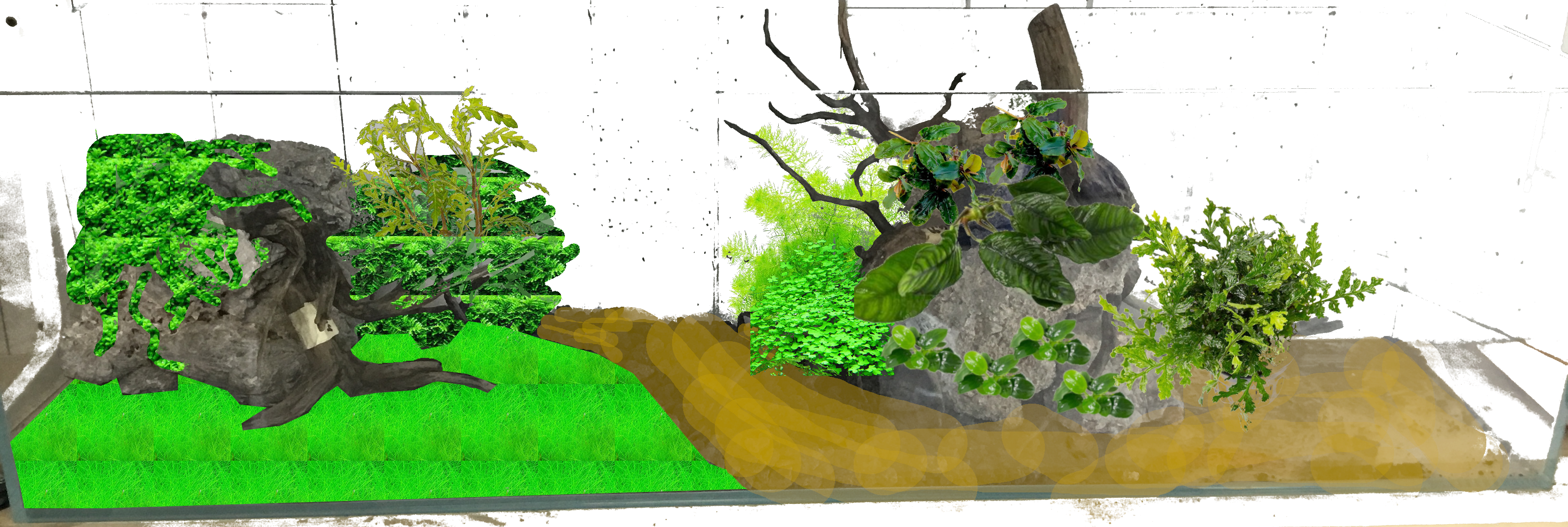
I didn't really stick to this design, but it gave me the courage to
move forward.
Nonetheless, at this stage I did identify an interesting idea: have the
two islands rest on different kinds of substrate — sand and soil,
a kind of "jungle island" and a "desert island".

Here's the tank immediately after planting and flooding with water.
I settled on fewer plants, and leaning hard into the "jungle and desert
islands" idea, I put lush plants on the jungle side, and only epiphytes
(plants that don't need soil) on the desert side.

Here it is a few months later!
I put pygmy
corydoras in the tank, because they're small enough to have a good
number in this size tank, they school, and they like to root around in
sand sometimes, also they're so dang cute:
A few months in, I started to have an algae problem and added some ococinclus
catfish and amano shrimp
to "help with the problem", since they have a reputation for being
voracious algae eaters. They did help, but they added their own bioload
to the tank, and I'm not sure they helped as much as dimming the lights
and using less fertilizer helped. Maybe one takeaway is to control
tank health with more water changes and lighting parameters, rathan
than try to to bandaid the issue with fauna.
I think I need to spend less time thinking during the design
stage. Instead of trying to perfect the hardscape and plant layout
in my mind, I need to just start putting materials together and see how
it looks. My early designs had only very faint influences on the final
product. I should have just thought of a theme and gone for it, saving
myself time.
I need to budget space for hiding things, like the filter inlet/outlet,
and the heater. In my defense though, this is a pretty small tank.